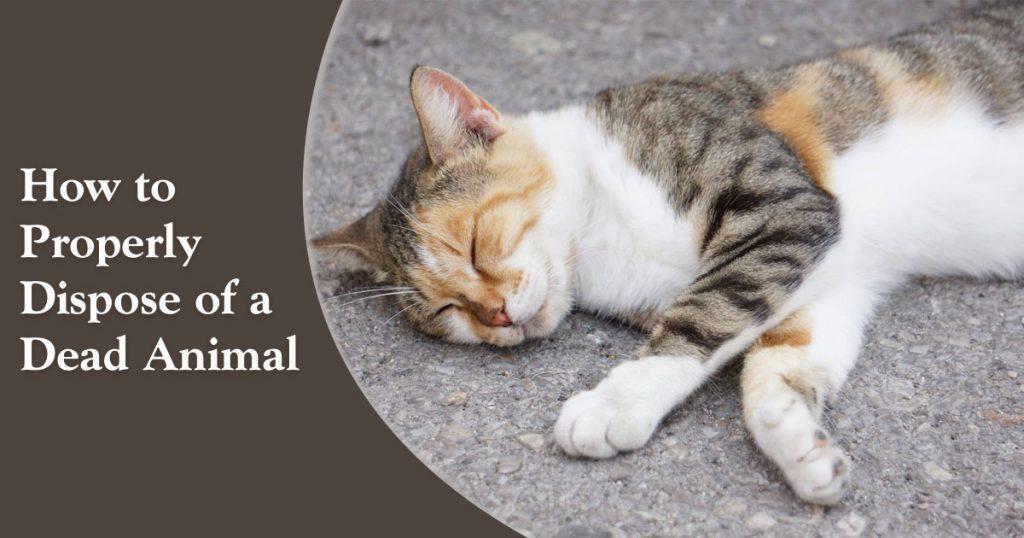Seeing a dead animal on your property can be quite upsetting, no matter if it’s a wild animal or a pet that has died. It’s really important to take care of a dead animal right away for several reasons. If you don’t, it might draw in other animals, which can create more issues. Plus, as the animal starts to decompose, it can release germs and smell bad, making your home an unpleasant place. The Federal Emergency Management Agency has also found that dead animals can spread diseases to both people and pets, which is why it’s important to remove them quickly.
If you’re facing this situation, it’s key to know how to handle it. This guide is here to show you how to deal with the situation safely and properly.
When Burying Isn’t An Option: Disposal Methods
If you can’t bury a dead animal because of local rules, not enough space, or because it’s too close to water, there are other ways to handle it:
- Local Animal Services: A simple choice is to call your local animal control or public works department. You can find their contact information online or in a community directory. They usually have a hotline or steps for you to follow to deal with dead animals. This option is more common in cities and suburbs, but it might be different if you live in the countryside.
- Incineration (Cremation): You can ask veterinary clinics or animal shelters near you about cremation services. They’ll tell you how to bring the animal in and how you can get the ashes back if you want. This choice is available in many places, but whether you can use it might depend on the clinic or shelter’s rules.
- Sanitary Landfills: You should put the dead animal in two plastic bags to stop any leaks. Then, check with your local waste management place to see if they take dead animals and what the rules are. Many places allow this, but the rules can change, especially based on the animal’s size.
- Specialized Removal Services: Professional services can help too. Look up wildlife removal or pet disposal services near you. These experts make sure the removal follows health and safety rules. This is more common in big cities and towns, but many services work in larger areas too.
- Donation for Science or Education: Some places, like veterinary colleges or natural history museums, might take dead animals for study or teaching. It’s a good idea to call them first to see if they’re interested. This might not be an option everywhere and it depends on what these places need at the time.
- Rendering Services: This means turning the animal’s body into different products. It’s more usual for farm animals, but some places might take pets or wild animals. You should call them first to check their rules. This is more likely to be an option in the countryside or farming areas.
Opting for Burial: Steps to Do It Correctly
If you decide to bury a dead animal and it’s allowed, it’s important to do it correctly to avoid health or environmental problems. Here are the steps to make sure you handle the burial properly:
- Check Local Rules: First, make sure that burying an animal in your yard is legal where you live. Find out how deep the grave needs to be and pick a spot far from water sources to avoid polluting them.
- Choose a Good Spot: Stay away from water, gardens, and places where utility lines run underground. It’s best to choose a place that won’t be disturbed later on.
- Dig the Grave: The hole should be at least 3 feet deep to keep away animals that might dig it up and to make sure it’s safe health-wise. The animal should be covered well.
- Be Safe: Wear gloves when you touch the dead animal to avoid catching any diseases. If you have lime, sprinkle some on the animal before covering it with earth to help with decomposition and reduce smells.
- Mark the Spot: You can put a stone or plant something over the grave as a respectful marker and to make sure nobody accidentally digs there later for landscaping or gardening activities.
- Wrap the Animal: If you can, wrap the animal in something that breaks down naturally, like a cotton towel or paper bag. This helps the body decompose in an eco-friendly way.
- Plant Something: Planting a tree or flowers over the grave is a beautiful way to remember the animal. It’s like a living tribute.
- Keep a Record: If you’re burying a pet, you might want to remember exactly where. You could take a picture, draw a little map, or write something down. This can be comforting if things change around your home.
Doing Right by Our Environment and Health
Getting rid of a dead animal the right way is about more than just keeping things clean; it’s also about showing respect. Whether you’re burying it, calling the city’s services, or using another method we talked about, you’re helping to stop diseases from spreading. This keeps people, pets, and other animals safe.
It’s also a way of showing kindness to all creatures, big and small. When we handle these situations carefully, we’re saying thank you to nature and all its animals for being part of our world. It’s about taking care of our surroundings and remembering that we’re all connected in the big circle of life.
In short, properly taking care of a dead animal is important. It keeps our communities healthy and shows that we care about our planet and its inhabitants. It’s a small but powerful way to make a difference.
